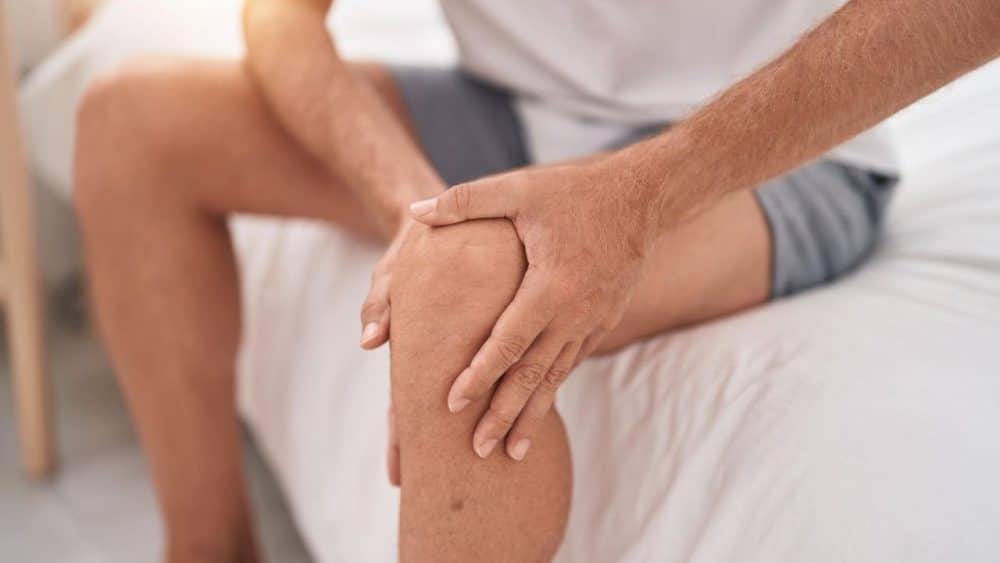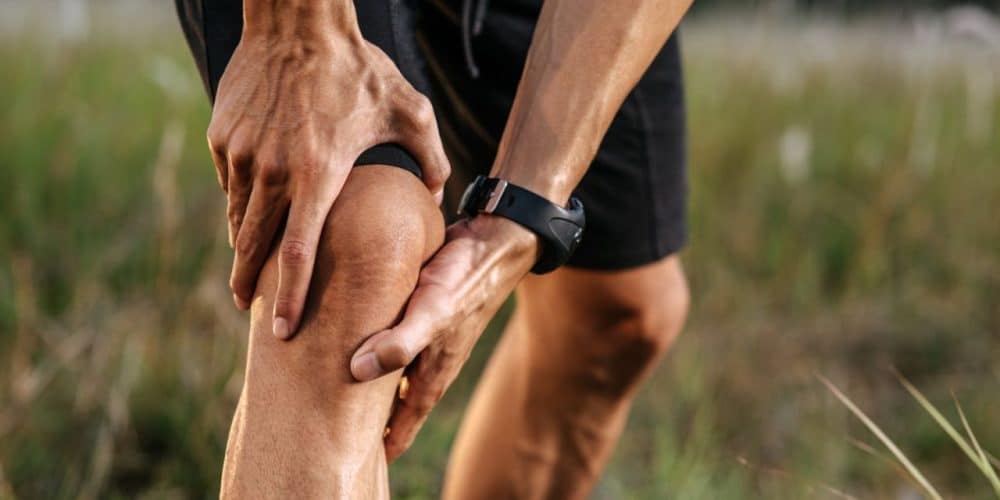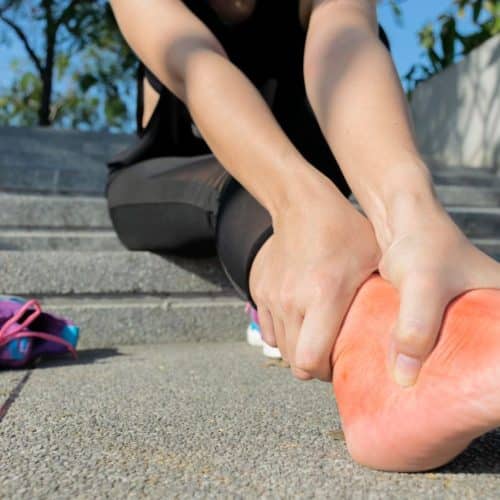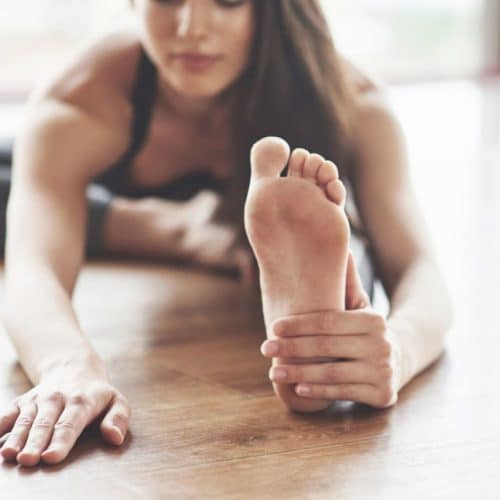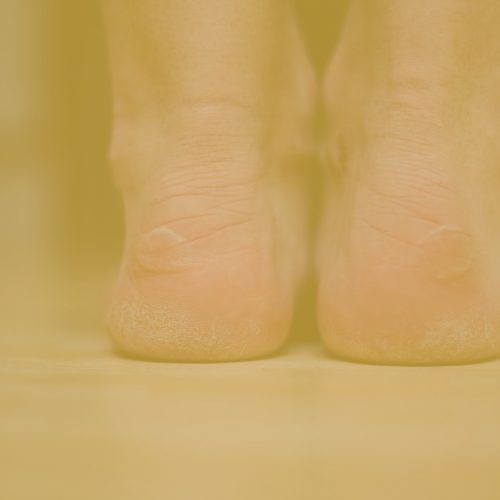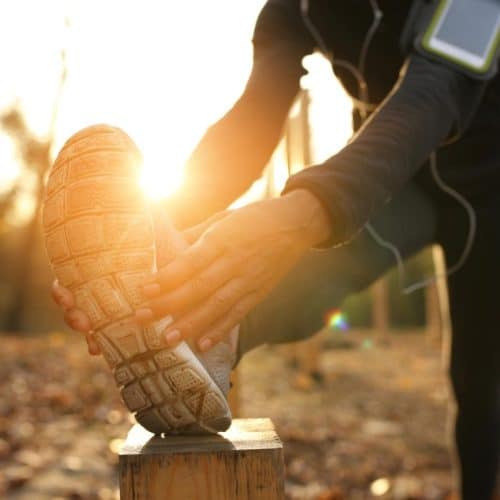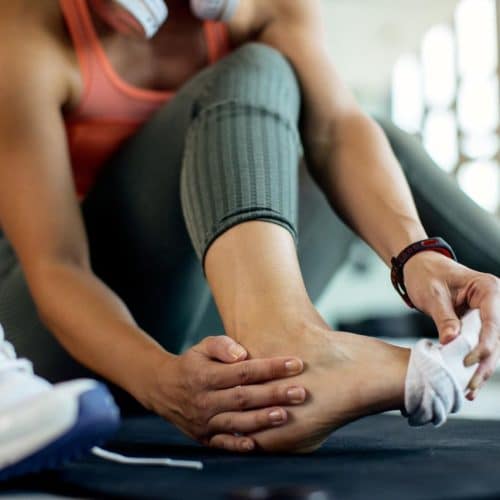Do you find yourself wincing with each step due to knee pain? Imagine a life where walking, climbing stairs, and enjoying your favourite activities were no longer a struggle. If you’re one of the countless individuals battling osteoarthritic knee pain, relief might be closer than you think. This article delves into short-term efficacy regarding physical interventions for osteoarthritic knee pain.
Picture this: a life with reduced discomfort, improved mobility, and a return to the activities you love. Our article uncovers the power of physical interventions in alleviating osteoarthritic knee pain. From targeted exercises that strengthen the surrounding muscles to cutting-edge modalities like cold laser therapy, the evidence is compelling. Studies show that participants experienced an average pain reduction of 30% within four weeks of consistent intervention. These results are remarkable when considering the toll that chronic knee pain can take on one’s quality of life.
But here’s the real question: Are you ready to bid farewell those agonising knee spasms and limited movement? Don’t let knee pain dictate how you live your life. Discover the tailored approaches that can provide rapid relief and renewed hope. Ready to step into a world of improved mobility? Let’s take that first step together.
Understanding Osteoarthritic Knee Pain
1. What is Osteoarthritis?
Osteoarthritis is a degenerative joint disease primarily affecting the cartilage, the protective tissue cushions the bones’ ends within joints. This cartilage is crucial for maintaining smooth joint movement by preventing bones from rubbing against each other. Cartilage acts like a shock absorber in a healthy joint, allowing for frictionless motion. However, in osteoarthritis, this cartilage begins to break down over time, leading to changes in the affected joint.
2. The Process of Cartilage Degeneration
In a joint affected by osteoarthritis, the cartilage gradually deteriorates. As it wears away, the once-smooth surface of the cartilage becomes rough and uneven. This alteration in the cartilage’s structure increases friction between the bones during movement. The body responds to this wear and tear by initiating an inflammatory process, resulting in swelling, pain, and stiffness.
3. Bone Changes and Spurs
As the cartilage continues to erode, the underlying bones may also change. In some cases, the bone tissue near the joint’s edges can thicken, forming bony outgrowths known as osteophytes or bone spurs. These spurs can further limit joint movement and contribute to pain.
4. Synovial Fluid and Joint Lubrication
Synovial fluid provides lubrication, nourishment, and shock absorption in a healthy joint. In osteoarthritic knees, the composition of this fluid can change, reducing its effectiveness in maintaining joint health. This alteration in synovial fluid quality can contribute to joint discomfort.
5. Factors Contributing to Osteoarthritic Knee Pain
Several factors can contribute to the development and progression of osteoarthritic knee pain. These include age, genetics, obesity, joint injuries, and repetitive stress on the knee joint. The condition is more common in older individuals, as the cumulative effects of wear and tear become more pronounced over time.
6. Identifying Symptoms
Recognising the symptoms of osteoarthritic knee pain is crucial for early intervention. Common symptoms include pain during movement or weight-bearing activities, stiffness, reduced range of motion, swelling, and a sensation of grating or cracking within the joint.
7. The Importance of Early Management
While osteoarthritis is a chronic condition, early management can significantly improve the quality of life for those affected. Timely interventions, including physical therapies, lifestyle adjustments, and medical treatments, can help alleviate pain, improve joint function, and slow down the progression of the disease.
Understanding the intricate processes involved in osteoarthritic knee pain provides valuable insights into individuals with this condition’s challenges. As cartilage breaks down, bones become affected, and inflammation sets in, resulting in pain, reduced mobility, and a decreased quality of life. However, with advancements in medical knowledge and a focus on tailored interventions, individuals can find ways to manage their symptoms and enhance their overall well-being.
Physical Interventions for Osteoarthritic Knee Pain
1. Exercise Therapy
Regular exercise is a cornerstone of managing osteoarthritic knee pain. Exercise therapy encompasses a range of activities specifically designed to strengthen the muscles surrounding the knee joint, improve flexibility, and enhance overall joint function. Low-impact exercises, such as swimming, cycling, and brisk walking, are particularly effective in minimising strain on the knee while still providing the necessary cardiovascular benefits.
Exercise helps maintain a healthy weight, reducing the load on the knee joint and stimulating the production of synovial fluid—the natural lubricant for joints. Through targeted exercises, strengthening the quadriceps, hamstrings, and calf muscles improves joint stability, reducing the risk of injury and discomfort.
2. Manual Therapy
Manual therapy involves hands-on manipulation of the affected joint by a skilled physiotherapist. These techniques can include joint mobilisation, where the therapist gently moves the joint through its range of motion, and joint manipulation, involving a more forceful movement to improve joint alignment and reduce pain.
Manual therapy aims to alleviate pain, reduce muscle tension, and enhance joint mobility by manipulating the joint. This can provide immediate relief and improve the overall quality of life for individuals struggling with osteoarthritic knee pain.
3. Electrotherapy
Electrotherapy utilises electrical currents to stimulate nerves and muscles around the knee joint. Techniques like transcutaneous electrical nerve stimulation (TENS) and ultrasound are commonly employed in the management of osteoarthritic knee pain.
TENS involves placing electrodes on the skin to deliver mild electrical impulses that help alleviate pain. Conversely, ultrasound uses high-frequency sound waves to generate heat within the tissues, promoting blood flow and relieving muscle tension. Both modalities can provide short-term pain relief and are often used in conjunction with other interventions.
4. Bracing and Supportive Devices
Knee braces and supportive devices are designed to provide stability, reduce strain, and alleviate pain in osteoarthritic knees. These devices vary in type and function, from simple neoprene sleeves that provide compression and warmth to more advanced unloader braces that shift the load away from the affected area of the knee.
Braces can offer immediate relief by reducing pressure on the joint, making activities like walking, climbing stairs, and even exercising more manageable. However, it’s essential to consult a healthcare practitioner to determine the most suitable type of brace for individual needs.
5. Heat and Cold Therapy
Heat and cold therapy are simple yet effective ways to manage acute pain and inflammation associated with osteoarthritic knee pain. Applying heat to the affected knee can help relax muscles, improve circulation, and reduce stiffness. Heat packs or warm baths are commonly used for this purpose.
On the other hand, cold therapy involves applying ice packs or cold compresses to the knee. Cold therapy can numb the area, reduce swelling, and relieve temporary pain. Alternating between heat and cold therapy can further enhance their benefits.
Physical interventions offer a multifaceted approach to managing osteoarthritic knee pain. Whether through exercise therapy, manual techniques, electrotherapy, or supportive devices, individuals can experience relief from pain, improved mobility, and an enhanced quality of life.
It’s important to note that the effectiveness of these interventions can vary from person to person, underscoring the significance of consulting with healthcare practitioners to determine the most suitable treatment plan. With the right strategies, individuals can take proactive steps towards minimising the impact of osteoarthritic knee pain on their daily lives.
Assessing Short-Term Efficacy
1. Immediate Pain Relief
One of the most compelling benefits of physical interventions for osteoarthritic knee pain is the potential for immediate pain relief. Many individuals experience a noticeable reduction in pain intensity shortly after undergoing these interventions. Techniques such as manual therapy, which includes joint mobilisation and manipulation, often lead to an immediate decrease in pain. Similarly, electrotherapy modalities like TENS can provide quick relief by stimulating nerve pathways that inhibit pain signals.
The immediate pain relief achieved through these interventions can be a significant morale booster for individuals who have been grappling with persistent knee pain. It enables them to experience a temporary respite from discomfort and move more freely.
2. Improved Mobility
Physical interventions also offer the advantage of improved joint mobility in the short term. Exercise therapy, which focuses on strengthening muscles around the knee joint and improving flexibility, can contribute to a better range of motion. Individuals often report being able to move their knees with greater ease and less discomfort after engaging in exercise therapy sessions.
Manual therapy techniques, such as joint mobilisation, further enhance joint mobility by addressing stiffness and promoting better alignment. These improvements in mobility are crucial for performing everyday tasks and maintaining an active lifestyle.
3. Enhanced Quality of Life
The benefits of short-term physical interventions extend beyond pain reduction and improved mobility—they can also lead to an enhanced quality of life. As pain subsides and mobility increases, individuals find engaging in activities they enjoy easier. Walking, climbing stairs, and even participating in once-challenging hobbies become more feasible.
The psychological impact of experiencing less pain and greater freedom of movement should be considered. A boost in mood, confidence, and overall well-being often accompanies the physical improvements, contributing to an overall improvement in an individual’s quality of life.
4. Addressing Short-Term Goals
Short-term interventions for osteoarthritic knee pain are particularly valuable for addressing immediate goals. Individuals may seek relief to participate in a specific event, engage in a planned activity, or simply experience a period of respite from persistent discomfort. Physical interventions effectively cater to these short-term needs, offering tangible and prompt results.
However, it’s important to note that while these interventions provide valuable short-term benefits, they may not provide a permanent solution. Osteoarthritis is a chronic condition, and a comprehensive treatment plan should consider both short-term relief and long-term management strategies.
The short-term efficacy of physical interventions in managing osteoarthritic knee pain is evident through immediate pain relief, improved joint mobility, and an enhanced quality of life. These interventions provide individuals with the opportunity to experience temporary respite from pain, move more freely, and engage in activities that might have been challenging before.
While these short-term benefits are valuable, individuals should collaborate with healthcare practitioners to develop a comprehensive plan that addresses immediate goals and long-term management of osteoarthritic knee pain.
The Importance of Customised Approaches
1. Tailored Treatment Plans
Recognising that every individual’s experience with osteoarthritic knee pain is unique underscores the significance of adopting customised approaches to treatment. A one-size-fits-all strategy may need to be revised to effectively address the diverse needs, preferences, and goals of those with this condition. As such, healthcare practitioners emphasise the development of tailored treatment plans that consider each patient’s specific circumstances.
2. Understanding Variability
The variability in osteoarthritic knee pain extends beyond its causes to factors such as pain intensity, joint degeneration, and response to interventions. What works well for one person may yield different results for another. Some individuals experience pain primarily during specific activities, while others struggle with constant discomfort. Recognising this variability is essential in crafting interventions that align with each person’s unique challenges.
3. Incorporating Multimodal Approaches
Customised approaches often involve the integration of various interventions. A personalised treatment plan might combine exercise therapy, manual techniques, and supportive devices to address different aspects of pain and mobility. By incorporating multiple modalities, healthcare practitioners can create a synergistic effect that maximises the benefits of each intervention.
4. Addressing Lifestyle and Preferences
Customised treatment plans also account for an individual’s lifestyle and preferences. Factors such as occupation, daily activities, hobbies, and even personal beliefs play a role in determining the most suitable interventions. For instance, a person with a physically demanding job might require specific strategies to manage work-related strain on the knee joint.
Incorporating a patient’s preferences into the treatment plan is equally crucial. Engaging individuals in decision-making empowers them to actively participate in their care, leading to a more successful and satisfactory outcome.
5. Monitoring and Adjusting
As individuals progress through their treatment plans, healthcare practitioners continuously monitor their response to interventions. This dynamic approach allows timely adjustments based on the patient’s evolving needs. If a particular intervention isn’t yielding the expected results, the treatment plan can be adapted to explore alternative approaches.
6. Empowering Patients
Customised approaches empower patients by acknowledging their unique experiences and involving them in their care journey. When individuals feel that their treatment plan is tailored to their needs and preferences, they are more likely to commit to the prescribed interventions and actively engage in the process.
Customised approaches to managing osteoarthritic knee pain are essential for addressing the complexity and variability of this condition. By tailoring treatment plans to individual needs, healthcare practitioners ensure that interventions are effective, relevant, and aligned with each person’s goals.
Customised approaches empower patients, promote active participation in their care, and contribute to better outcomes and an improved quality of life. As our understanding of osteoarthritis advances, the importance of customisation becomes increasingly evident in optimising treatment strategies.
Conclusion
In conclusion, exploring the short-term efficacy of physical interventions in managing osteoarthritic knee pain sheds light on promising outcomes. The research discussed in this blog underscores the importance of incorporating physical interventions as a key component of comprehensive osteoarthritis management strategies.
From exercise routines tailored to individual needs to manual therapies, the evidence suggests that these interventions can provide meaningful relief and improve the quality of life for those suffering from knee pain associated with osteoarthritis.
These interventions address the physical aspect of knee pain and contribute to mental and emotional well-being. By engaging in regular physical activities and therapies, individuals can experience reduced pain levels, increased joint function, and enhanced mobility. Moreover, these interventions can potentially delay or even reduce the need for invasive surgical interventions, presenting a non-invasive and holistic approach to managing osteoarthritic knee pain.
Now that we’ve delved into the world of short-term efficacy of physical interventions for osteoarthritic knee pain, it’s time to empower yourself. What steps are you willing to take to incorporate these physical interventions into your daily routine? Are you ready to embrace a proactive approach to managing your knee pain and enhancing your overall well-being?
Share your thoughts and intentions below – your journey towards a healthier and more active life begins with that first step.
Content Summary
- If you’re one of the countless individuals battling osteoarthritic knee pain, relief might be closer than you think.
- Picture this: a life with reduced discomfort, improved mobility, and a return to the activities you love.
- From targeted exercises that strengthen the surrounding muscles to cutting-edge modalities like cold laser therapy, the evidence is compelling.
- Studies show that participants experienced an average pain reduction of 30% within four weeks of consistent intervention.
- These results are remarkable when considering the toll that chronic knee pain can take on one’s quality of life.
- Don’t let knee pain dictate how you live your life.
- Osteoarthritis is a degenerative joint disease primarily affecting the cartilage, the protective tissue cushions the bones’ ends within joints.
- In osteoarthritic knees, the composition of this fluid can change, reducing its effectiveness in maintaining joint health.
- This alteration in synovial fluid quality can contribute to joint discomfort.
- Several factors can contribute to the development and progression of osteoarthritic knee pain.
- Recognising the symptoms of osteoarthritic knee pain is crucial for early intervention.
- While osteoarthritis is a chronic condition, early management can significantly improve the quality of life for those affected.
- Timely interventions, including physical therapies, lifestyle adjustments, and medical treatments, can help alleviate pain, improve joint function, and slow down the progression of the disease.
- Understanding the intricate processes involved in osteoarthritic knee pain provides valuable insights into individuals with this condition’s challenges.
- However, with advancements in medical knowledge and a focus on tailored interventions, individuals can find ways to manage their symptoms and enhance their overall well-being.
- Regular exercise is a cornerstone of managing osteoarthritic knee pain.
- Manual therapy aims to alleviate pain, reduce muscle tension, and enhance joint mobility by manipulating the joint.
- This can provide immediate relief and improve the overall quality of life for individuals struggling with osteoarthritic knee pain.
- Techniques like transcutaneous electrical nerve stimulation (TENS) and ultrasound are commonly employed in the management of osteoarthritic knee pain.
- Both modalities can provide short-term pain relief and are often used in conjunction with other interventions.
- Knee braces and supportive devices are designed to provide stability, reduce strain, and alleviate pain in osteoarthritic knees.
- However, it’s essential to consult a healthcare practitioner to determine the most suitable type of brace for individual needs.
- Heat and cold therapy are simple yet effective ways to manage acute pain and inflammation associated with osteoarthritic knee pain.
- On the other hand, cold therapy involves applying ice packs or cold compresses to the knee.
- Alternating between heat and cold therapy can further enhance their benefits.
- Physical interventions offer a multifaceted approach to managing osteoarthritic knee pain.
- One of the most compelling benefits of physical interventions for osteoarthritic knee pain is the potential for immediate pain relief.
- Techniques such as manual therapy, which includes joint mobilisation and manipulation, often lead to an immediate decrease in pain.
- The immediate pain relief achieved through these interventions can be a significant morale booster for individuals who have been grappling with persistent knee pain.
- Physical interventions also offer the advantage of improved joint mobility in the short term.
- Individuals often report being able to move their knees with greater ease and less discomfort after engaging in exercise therapy sessions.
- The benefits of short-term physical interventions extend beyond pain reduction and improved mobility—they can also lead to an enhanced quality of life.
- A boost in mood, confidence, and overall well-being often accompanies the physical improvements, contributing to an overall improvement in an individual’s quality of life.
- Short-term interventions for osteoarthritic knee pain are particularly valuable for addressing immediate goals.
- Physical interventions effectively cater to these short-term needs, offering tangible and prompt results.
- The short-term efficacy of physical interventions in managing osteoarthritic knee pain is evident through immediate pain relief, improved joint mobility, and an enhanced quality of life.
- While these short-term benefits are valuable, individuals should collaborate with healthcare practitioners to develop a comprehensive plan that addresses immediate goals and long-term management of osteoarthritic knee pain.
- Recognising that every individual’s experience with osteoarthritic knee pain is unique underscores the significance of adopting customised approaches to treatment.
- A one-size-fits-all strategy may need to be revised to effectively address the diverse needs, preferences, and goals of those with this condition.
- As such, healthcare practitioners emphasise the development of tailored treatment plans that consider each patient’s specific circumstances.
- The variability in osteoarthritic knee pain extends beyond its causes to factors such as pain intensity, joint degeneration, and response to interventions.
- Recognising this variability is essential in crafting interventions that align with each person’s unique challenges.
- Customised approaches often involve the integration of various interventions.
- A personalised treatment plan might combine exercise therapy, manual techniques, and supportive devices to address different aspects of pain and mobility.
- By incorporating multiple modalities, healthcare practitioners can create a synergistic effect that maximises the benefits of each intervention.
- Customised treatment plans also account for an individual’s lifestyle and preferences.
- Factors such as occupation, daily activities, hobbies, and even personal beliefs play a role in determining the most suitable interventions.
- Customised approaches empower patients by acknowledging their unique experiences and involving them in their care journey.
- When individuals feel that their treatment plan is tailored to their needs and preferences, they are more likely to commit to the prescribed interventions and actively engage in the process.
- Customised approaches to managing osteoarthritic knee pain are essential for addressing the complexity and variability of this condition.
- By tailoring treatment plans to individual needs, healthcare practitioners ensure that interventions are effective, relevant, and aligned with each person’s goals.
- Customised approaches empower patients, promote active participation in their care, and contribute to better outcomes and an improved quality of life.
- As our understanding of osteoarthritis advances, the importance of customisation becomes increasingly evident in optimising treatment strategies.
- In conclusion, exploring the short-term efficacy of physical interventions in managing osteoarthritic knee pain sheds light on promising outcomes.
- The research discussed in this blog underscores the importance of incorporating physical interventions as a key component of comprehensive osteoarthritis management strategies.
- From exercise routines tailored to individual needs to manual therapies, the evidence suggests that these interventions can provide meaningful relief and improve the quality of life for those suffering from knee pain associated with osteoarthritis.
- These interventions address the physical aspect of knee pain and contribute to mental and emotional well-being.
- By engaging in regular physical activities and therapies, individuals can experience reduced pain levels, increased joint function, and enhanced mobility.
- Moreover, these interventions can potentially delay or even reduce the need for invasive surgical interventions, presenting a non-invasive and holistic approach to managing osteoarthritic knee pain.
FAQs
1. Is exercise therapy safe for all individuals with osteoarthritic knee pain?
Exercise therapy should be tailored to an individual’s condition and capabilities. Consulting a healthcare practitioner before starting any exercise program is recommended.
2. How often should I undergo manual therapy sessions?
The frequency of manual therapy sessions depends on the severity of your condition and the recommendations of your physiotherapist.
3. Can electrotherapy completely cure osteoarthritic knee pain?
Electrotherapy provides short-term relief and management of pain. It may not completely cure osteoarthritis, but it can be a valuable part of a comprehensive treatment plan.
4. Are there any side effects to using knee braces?
When used correctly, knee braces generally have minimal side effects. It’s important to follow the instructions provided by your healthcare practitioner.
5. Are there any alternative treatments complementing physical interventions for osteoarthritic knee pain?
Several alternative treatments can work alongside physical interventions to manage osteoarthritic knee pain effectively.


